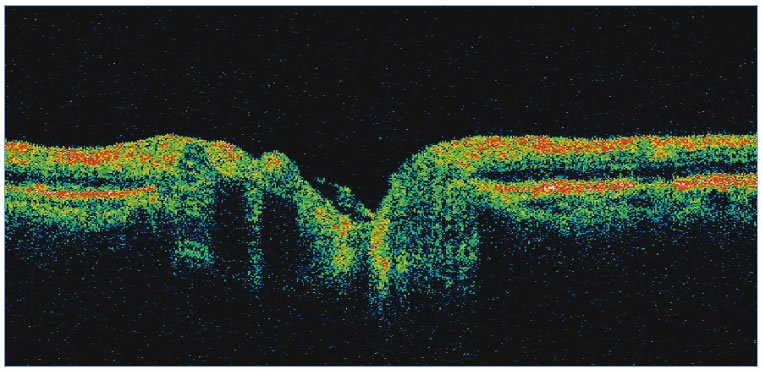 Understanding Glaucoma
Understanding Glaucoma
While some of you may have just discovered that you may have glaucoma, others
may be further ahead in the process of adjusting and learning to live with
glaucoma. This article has been specially designed to show you how you too can
successfully manage glaucoma to live a normal and fulfilling life.
Glaucoma is one of the leading causes of blindness in the world.
Approximately two percent of the population have this disease, unlike the visual
loss caused by cataract, that caused by glaucoma is irreversible, But
fortunately early diagnosis and appropriate treatment can prevent visual loss in
most cases.
Understanding the condition
1.
What is glaucoma?

Glaucoma is a disease of the optic nerve head caused by too much pressure in the
eye
2.
How does this happen?
The inside of the eye contains fluid that is constantly flowing into and being drained
out of the eye.
Think of the eye as a sink with a tap that is always open. The water flows
through if the drainage mechanism is working alright. The trouble arises when
the drainage is blocked and water begins to collect. When the drainage mechanism
gets blocked, it results in fluid collecting in the eye. As the fluid builds up,
it begins to exert pressure inside the eye. This pressure is referred to as
intraocular pressure(IOP). Just as abnormally high blood pressure affects the
body adversely, IOP which builds up to an abnormally high level can harm the
eye.
3.
How is it spotted?


Glaucoma is a disease which cannot be seen or felt by the patient in the early
stage. It is usually spotted during the course of a routine eye check-up. The
damage appears as a gradual visual change and then loss of vision. Peripheral
vision that is the top, sides, and bottom areas of vision are affected first and
central vision which the patient perceives remains intact till the last stage.

4.
Are there different types?
There are basically two types of glaucoma. CHRONIC OR OPENANGLE GLAUCOMA: this
is the most common form, it is painless and there are no warning symptoms, it
progresses very slowly and often, by the time it is spotted some amount of
damage has already occurred,
ACUTE OR ANGLE CLOSURE GLAUCOMA: Here the eye pressure rises acutely due to
sudden closure of drainage channels. Such sudden closure can occur in eyes with
narrow angles. When pupils are enlarged with certain medications, or in a
darkened room. Patients present with severe headache, eye pain, redness,
watering, nausea, and blurred vision. They demand a prompt and emergency medical
treatment.
Other rare forms of glaucoma include those which occur secondary to injury or
inflammation. Low tension glaucoma in which optic nerve damage occurs at near
normal pressures and developmental glaucoma which occur in infants.
5.
Who is at risk?
People above 40yrs
Those with a family history of glaucoma
Diabetes & systemic hypertension
6.
Diagnosing glaucoma
Most people discover that they have glaucoma during routine examination.
There are 4 tests used to diagnose and monitor the progression of glaucoma
1. Tonometry: to measure the IOP

2. Gonioscopy: to differentiate the types of glaucoma

3. Ophthalmoscopy: to view the optic nerve changes

4. Perimetry: to map the visual field of each eye. (Optopol Blue on
Yellow Static and KineticPerimeter)


PREVENTION AND CURE
1.
Is there a cure?
Once diagnosed as a glaucoma patient , you require constant and lifelong care.
Although glaucoma can easily be controlled, any damage that has already occurred
cannot be reversed, Glaucoma can be successfully controlled with eye drops, pills, laser and surgical operations to prevent further damage.
METHOD OF TREATMENT
1.
How effective is Medication?
The most common treatment of choice for glaucoma is medication, Medications can
work in two ways. One is to increase the drainage of fluid in the eye while the
other is to decrease the production of fluid in the eye.

2.
When is surgery an option?
Surgery is necessary in Developmental Glaucoma and in adults when medicines do
not adequately control IOP.

LASER TREATMENT makes use of laser beam to create an alternate pathway for the
drainage of fluid by a painless outpatient procedure.

Glaucoma is a disease that has to be constantly monitored and controlled, but as
you can see, most people with glaucoma live active,unrestricted lives simply by
taking care of themselves and giving their eyes the quality care and attention
that they need.
If you wish to know about glaucoma or treatments available, you are most welcome
to approach your doctor,
Remember, that he is your primary guide to controlling Glaucoma
Facilities available with us for diagnosis and treatment of glaucoma
1. Slitlamp Biomicroscopy
For examination of the front part of the eye under magnification
2. Schiotz and Applanation Tonometry,
To measure intra ocular pressure (IOP)
3) Goldmann 3 mirror Goniolens
For gonioscopy, Peripheral Retinal Visualization
4) Posner Diagnostic and Surgical Gonioprism-
For Goniotomy
5) 90D lens
to view the optic disc
6) Optopol computerized visual field analyzer
For testing the visual field and for early detection of glaucoma
7) YAG laser
For laser iridotomy
8) Frequency doubled Nd-Yag laser
For Laser Trabeculoplasty
9) Operating Microscope
For microsurgical procedures
- Website:
www.srivenkateshwaranethralaya.com
-
 VENKATESWARA
NETHRALAYA
VENKATESWARA
NETHRALAYA
-
 Understanding Glaucoma
Understanding Glaucoma












